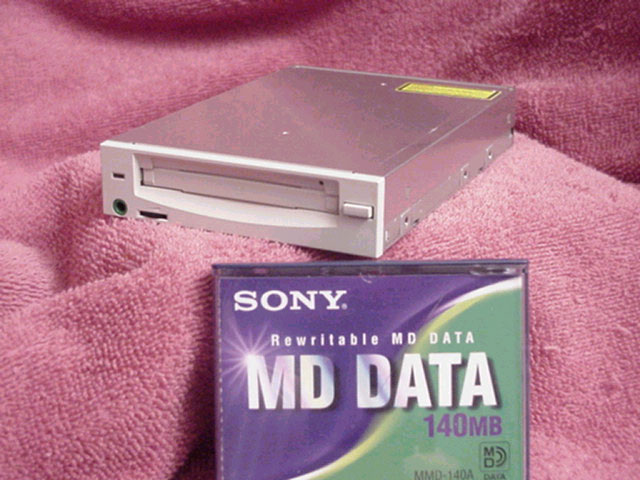

- MINIDISC READER FOR MAC PORTABLE
- MINIDISC READER FOR MAC LICENSE
- MINIDISC READER FOR MAC PROFESSIONAL
The biggest competition for MiniDisc came from the emergence of MP3 players. Initially, Sony believed that it would take around a decade for CD-R prices to become affordable – the cost of a typical blank CD-R disc was around $12 in 1994 – but CD-R prices fell much more rapidly than envisioned, to the point where CD-R blanks sank below $1 per disc by the late 1990s, compared to at least $2 for the cheapest 80-minute MiniDisc blanks. MiniDisc technology was faced with new competition from the recordable compact disc ( CD-R) when it became more affordable to consumers beginning around 1996. This inconvenience contrasted with the earlier common use of cassette decks as a standard part of an ordinary hi-fi set-up.
MINIDISC READER FOR MAC PORTABLE
Mains-powered Hi-fi MiniDisc player/recorders never got into the lower price ranges, and most consumers had to connect a portable machine to the hi-fi in order to record. The initial high cost of equipment and blank media was also a factor. The initial low uptake of MiniDisc was attributed to the small number of pre-recorded albums available on MD as relatively few record labels embraced the format. Since then, recordable CDs, flash memory and HDD and solid-state-based digital audio players such as iPods have become increasingly popular as playback devices. It was relatively popular in Japan and the United Kingdom during the 1990s, but did not enjoy comparable sales in other world markets. However, non-Sony machines were not widely available in North America, and companies such as Technics and Radio Shack tended to promote DCC instead.ĭespite having a loyal customer base largely of musicians and audio enthusiasts, the MiniDisc met with only limited success in the United States.
MINIDISC READER FOR MAC LICENSE
Sony attempted to license MD technology to other manufacturers, with JVC, Sharp, Pioneer, Panasonic and others all producing their own MD systems. This created marketing confusion very similar to the Betamax versus VHS battle of the late 1970s and early 1980s. By the time Sony came up with the MiniDisc in late 1992, Philips had introduced a competing system, DCC, on a magnetic tape cassette.
MINIDISC READER FOR MAC PROFESSIONAL
Relegating the DAT to professional use, Sony set to work to come up with a simpler, more economical digital home format. dollar had fallen so far against the yen that the introductory DAT machine Sony had intended to market for about $400 in the late 1980s now had to retail for $800 or even $1000 to break even, putting it out of reach of most users. Due to technical delays, the DAT was not launched until 1989, and by then the U.S. Sony had originally intended the Digital Audio Tape (DAT) to be the dominant home digital audio recording format, replacing the analog cassette. Sony's MiniDisc was one of two rival digital systems, both introduced in 1992, that were targeted as replacements for the Philips Compact Cassette analog audio tape system: the other was the Digital Compact Cassette (DCC), created by Philips and Matsushita (now Panasonic). It took almost 10 years however before their idea was commercialized. In 1983, just a year after the introduction of the Compact Disc, Kees Schouhamer Immink and Joseph Braat presented the first experiments with erasable magneto-optical Compact Discs during the 73rd AES Convention in Eindhoven. High-Definition Versatile Multilayer Disc (HD VMD).HD DVD: HD DVD-R, HD DVD-RW, HD DVD-RAM.Blu-ray Disc ( BD): BD-R & BD-RE, Blu-ray 3D, Mini Blu-ray Disc.DVD: DVD-R, DVD+R, DVD-R DL, DVD+R DL, DVD-R DS, DVD+R DS, DVD-RW, DVD+RW, DVD-RAM, DVD-D, DVD-A, HVD, EcoDisc, MiniDVD.Compact disc ( CD): CD-DA, CD-ROM, CD-R, CD-RW, 5.1 Music Disc, Super Audio CD ( SACD), Photo CD, CD Video ( CDV), Video CD ( VCD), Super Video CD ( SVCD), CD+G, CD-Text, CD-ROM XA, CD-i, MIL-CD, Mini CD.


 0 kommentar(er)
0 kommentar(er)
